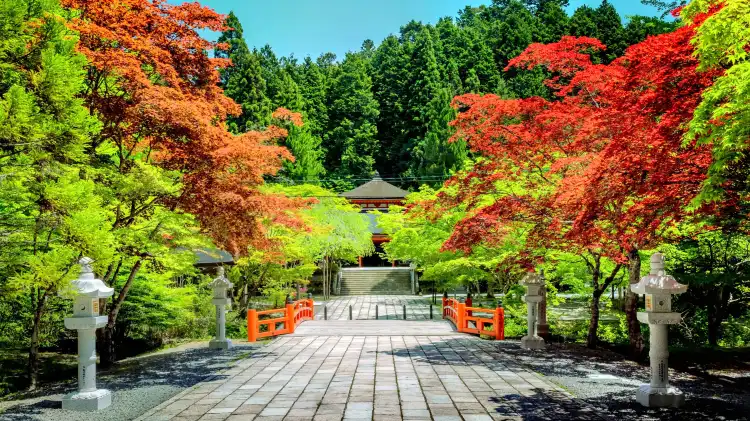
Find the Cheap Koya Hotels
Enter your dates for the latest hotel rates and availability.
Hot travel dates
Today
Tomorrow
This Weekend
Next Weekend
February 2025
- Mon
- Tue
- Wed
- Thu
- Fri
- Sat
- Sun
- 1
- 2
- 3
- 4
- 5
- 6
- 7
- 8
- 9
- 10
- 11
- 12
- 13
- 14
- 15
- 16
- 17
- 18
- 19
- 20
- 21
- 22
- 23
- 24
- 25
- 26
- 27
- 28
March 2025
- Mon
- Tue
- Wed
- Thu
- Fri
- Sat
- Sun
- 1
- 2
- 3
- 4
- 5
- 6
- 7
- 8
- 9
- 10
- 11
- 12
- 13
- 14
- 15
- 16
- 17
- 18
- 19
- 20
- 21
- 22
- 23
- 24
- 25
- 26
- 27
- 28
- 29
- 30
- 31
Swipe up to view more
Filter by:
Hotel Star Rating
≤2345
Popular Filters
Amazing 4.5+Great 4.0+Good 3.5+Pleasant 3.0+We found 7 hotels for you in Koya
Choose your travel dates to see the latest prices and deals.
Most Booked
Lowest Price
Closest to Downtown
Highest Rated



Hotel near Koya
2024.12.13
The Temple is beautiful and we enjoyed the nippon decors. The dinner atmosphere is very special, we feel disgusted. The dinner was good. The geographical location is excellent. Not liked · It is true that the monkeys' life is minimalist, but the price of the room with private bathroom is exorbitant. We would have liked a water-fledged isothermal carpet with two glasses. It is not an exaggerated demand, it is ecological and cheap in terms of price. Breakfast was served during the ceremony. The hotel was very comfortable and the hotel was very comfortable. To speed up things, cold dishes can be placed before our arrival, but hot dishes should be served when we sit. We were disappointed that the night walk with monks was not included in the high price of the room. (About $20 per person for a night at $800).
Excellent
2 reviews
4.4/5
Price from
CAD 273
per night
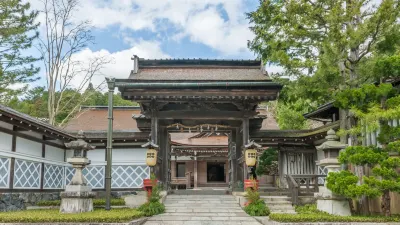
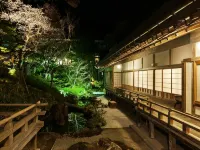
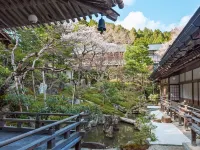
Hotel near Koya
普普成慧德 2024.03.09
The hardware is unique and beautiful! There are two aspects to the software: 1. If you are a true Buddhist, you will feel that the commercial atmosphere is very strong, and the morning and evening classes are irregular. 2. The basic services are not up to standard, such as frozen food. It is disappointing that hot water or water boiling tools are not provided in snowy weather. of!
Outstanding
18 reviews
4.6/5
Price from
CAD 363
per night



Hotel near Koya
PPinkozxc 2023.10.31
It wasn't the most pleasant experience considering that the males n females had to share toilets and that some other rooms had private toilets n bath instead. And also the fact that the walls are super thin hence whomever is connected to your room if their loud or they don't like your voice volume than you might get kicked to the curb. It's a very frustrating experience for sure since it tests one's patience n ability to let go. It's training for the customers n monks alike. I met a Japanese friend here whom shared with me how rude the monks and the staff were to one another n I think that shows the quality of this place however we were pretty lucky as there was a male who spoke mandarin n a male who spoke English both quite well in this place n though the mandarin speaker was quite condescending towards the other monks, the English speaker was really nice n patient overall. He helped me out a lot since we couldn't communicate with the others n seemed to be the only customers that spoke English whom booked this place by ourselves, the others around seemed to have a guide n were usually in groups.
It's a unique experience n I recommend just staying for one night or going to the other temples. I went for the ajikan meditation at eko in temple n the service n cleanliness was on another level for sure. The food here was also really simple. Also a must see are the tomb area n the walk to kobold daishi temple. As a sensitive person, I felt the overwhelming love n presence and the cleanse of my heart of this amazing soul over there. To me, that was worth it. Remember to clean yourself with the water out front before going in.... and of course to the amazing fateful friendship that occurred for us with the jap-********* couple we met. It was the next fav of mine after the time spent in nara visitor center. That was truly magickal n how I wished we stayed longer there. But all was good cause the way I planned this trip made it so that we would have this fateful encounter to the end of our trip.
30 reviews
3.9/5
Price from
CAD 366
per night

You Might Like
Hotels With BreakfastHotels With Twin RoomHotels With 1 Double BedHotels With Swimming PoolHotels With Free Cancellation



Hotel near Koya
GGuest User 2022.11.25
It was a very comfortable and wonderful shukubo. The correspondence of the receptionist is good. The care is also wonderful. Access is very good as it is in front of Kongobuji Temple. Convenient to go anywhere. The food is delicious. The morning work experience was also a very good experience. The story of the priest was also very nice, and he spoke in English to foreign customers. I think all the participants had a good experience. I was able to take pictures freely inside the temple, and the priest was good at chatting, so I had fun and had them take pictures together. I think everyone in this temple has a wonderful personality. I was able to eat in my room and relax. The bathhouse explained the rules with illustrations written in English and Japanese to foreigners. The way to wear yukata was also drawn. It was posted in an easy-to-understand place, so I think foreign customers will read it properly. It was a nice shukubo with consideration and hospitality. I definitely want to go again. Check-out is 10:00, so I was grateful that the shops and temples were open. I really recommend this place.
Excellent
48 reviews
4.5/5
Price from
CAD 253
per night
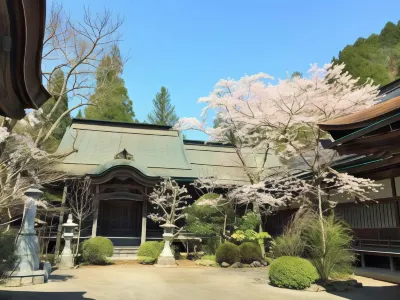

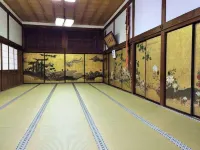
Hotel near Koya
TTaizi 2023.08.08
There are many temples in Koyasan, and Panzhao Temple has the same name as my gymnasium, so I chose it. Although I belong to the Fengshan school, it is still a great experience. From the furnishings in the house to the refined cuisine, and then to the morning class, it is a great experience. Although I encountered bad weather, landslides, and was stranded on the mountain, I decided to go down the mountain to the nearest The train station, (although it is not open to traffic) spent more than 4,000 yen to carpool with the Japanese guy back to Osaka, but the whole Koyasan trip, including the experience at Panshoin, is still great, and I will go again next time! I still haven't covered a pile of royal seals😙
Very Good
9 reviews
4.1/5
Price from
CAD 167
per night

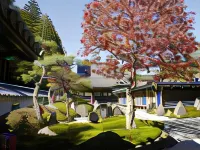

Hotel near Koya
GGuest User 2023.08.21
We stayed for one night. The location really is magic, our room was comfortable and it was nice to attend the early morning ceremony before breakfast. The time for dinner was really early and strict (17:45!) but it's recommended to eat in because everything around there closes early. Even if the curfew was at 21, the staff sent as away from the common spaces where we were quietly enjoying the night view at 20:20, while they let a loud group in the entrance disturb everyone until 21:30, so I was a bit upset for this. I enjoyed the onsen but it was very small, I was lucky it wasn't crowded because no more than 4 people can fit in. I personally liked the vegan dinner and breakfast, beautifully presented, but it's not for every stomach and nobody tells you what you are eating (they only told us ”this is rice, tea and watermelon”, we could guess ourselves lol). In the complex, the experience was good and I recommend it, but it's a bit too expensive for what they offer.
Excellent
41 reviews
4.4/5
Price from
CAD 315
per night



Hotel near Koya
2023.03.19
After spending two hours getting to the temple from Namba, it was refreshing to absorb the peace and tranquility of the place. The place is just a short walk up a slight slope from the bus stop where we got off. Check-in was smooth with good explanation on the place and the facilities. Place was spotless and they ensured that by helping to clean the wheels of our luggage. Room is of ample size for four of us in a traditional setting sleeping on tatami mats. A toilet is attached to my room but the bathing facilities is a sharing facility which was clean and spacious. Dinner and breakfast were superb vegetarian meals. We also had a great experience with the morning prayers which also taught us a meditation method. This place is within easy walking distance to the small town center with restaurants for lunch. Bus schedule to other places are posted on the bus stops. Overall, we had a peaceful stay here which was a good break from the hustle of the big cities.
Outstanding
37 reviews
4.7/5
Price from
CAD 306
per night



Hotel near Koya
杨杨 2018.10.08
I drove for three hours in the morning and arrived at Koyasan from Kyoto. The temperature on the mountain was 5 or 6 degrees cooler than Kyoto. We stayed at Huiguangyuan, a 1000-year-old Buddhist monastery. The temple has traditional Japanese-style rooms and beautiful gardens. The meals are Buddhist and vegetarian, and the service staff are monks, making people feel the Japanese Buddhist culture. The morning morning there was a Buddhist morning class and meditation activities. [Konoyama] On the altar, Kalan - Jingangfeng Temple - Huiguangyuan. Koyasan is the ancestral ancestor of Dongmi Mang, and was founded by the master of Hongfa in the 7th year of Hongren (816). Legend has it that the Master of the Seas was willing to find a lotus sacred place like Wutai Mountain in China to promote the Dharma. When the line went to Gaoye Mountain, a pair of white dogs and black dogs led the way. The Masters of the Sea followed them to discover the eight peaks around the Gaoye Mountain, so they were Here you build your own dojo, which has been passed down to the present. The altar on the altar is the center of the entire Gaoye Mountain, and it is also the place where the empty sea masters first built the temple. The Jingangfeng Temple is the largest temple in Koyasan. It was originally built by Toyotomi Hideyoshi in 1593, and was renamed as the King Kong Temple in the Meiji era.
Outstanding
46 reviews
4.6/5
Price from
CAD 348
per night

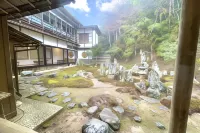

Hotel near Koya
GGuest User 2023.11.17
We stayed at this temple for one night and it was worth it. You have a vegan breakfast and dinner cooked for you whilst you stay in a traditional Japanese style room. Location wise, it was perfect for us. The cemetery is about a 20-25 minute walk which isn’t too bad as you explore the area anyway. The monks were very welcoming and I had a fun conversation with one about football (they love Tomiyasu and Mitoma). They spoke English very well and I could communicate easily, even one monk who couldn’t speak much English just pulled out his phone and used translator to speak. In the morning, you’re invited to join their morning prayers which is a unique experience. It’s about 30 minutes long and certainly something you don’t want to miss. Some things to be aware of is, for us, we had the option of having dinner served at either 5 or 5:30pm. Dinner for the most part was tasty and delicious. I’m open minded and willing to try things I wouldn’t normally have - but I can imagine picky eaters not enjoying some of the dishes. Also, curfew is around 9pm. They literally shut the temple doors. So be careful about doing night tours of the cemetery that start at 7. (We went on our own accord as it was dark by 5pm anyway)
Excellent
44 reviews
4.5/5
Check Availability
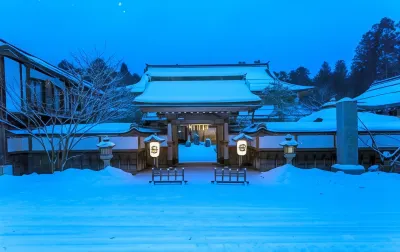

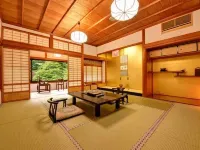
Hotel near Koya
HHONGWEI 2020.02.18
Others have written very well. Sorry, there was a particularly old monk in the morning and evening meals, and we had morning classes with us at the same time, full of joy. The little monk is very good in English, and talked a few words. He graduated from a religious university. He was born from heart to heart, and sighed sincerely. They brought spiritual practice into their lives. The buses on the street and the timetable of the hotel are very detailed, and you can speak English. Both bus and cable car train times are well matched.
The hotel is very beautiful, the columns of the stairs are made of whole wood, and the annual rings are dozens or hundreds of years.
The only drawback is that there is a cover on the electric heater in the bathroom, which cannot be cleaned by covering all the dust inside. A lot of fluff has accumulated.
Excellent
36 reviews
4.4/5
Price from
CAD 337
per night
Latest Reviews for Koya hotels
See all
Explore genuine reviews and ratings from real travellers to find the perfect accommodation for your needs.
4.6/5
Outstanding
GGuest UserIt is located near Ichinohashi, the entrance to the approach to Okunoin on Mt. Koya. It was founded by Kobo Daishi during the Tencho era (824-834). Koyasan Shingon Buddhism head temple. The principal object of worship is Hatsukaichi Daishi (a wooden statue made by Kobo Daishi). Book a shukubo on Rakuten Travel. There are two types of rooms: fusuma partitions and wall partitions. None of the rooms have baths and toilets. There are options for meals such as none / breakfast only / 2 meals, dinner 2 meals / 2 meals, dinner 3 meals. Select the plan (16,500 yen) of ”wall partition room, 2 meals and 3 dinners”. I was assigned to the farthest room, two rooms of 6 tatami mats + 4.5 tatami mats. It is true that the partition from the next room is a wall, but the partition from the corridor is a fusuma and shoji door. That is, there is no key. There is a fan in the room, but there is no air conditioner, so it may be difficult to stay in the middle of summer. Amenities include face towels, bath towels, and toothbrushes. There are 3 karans in the shared bath. The bathtub is made of cypress (probably) and is the size that about 3 people can enter at the same time. It's different from a ryokan, so you shouldn't expect a large bath. However, it is annoying that hot water only trickles out from the callan/shower. The morning service starts at 6:30 at Reihido. You can sit on a chair and listen to the sutras chanted by the monks. There is a tour that guides you through the hall and you can take pictures. Part of the building was built about 170 years ago, and was used as a reference when reconstructing Kongobu-ji Temple. There is also a goma tree attached, and you can experience the goma practice that starts at 13:00. This was my first experience at a temple lodging, so I don't know if this was standard, but it was certainly a valuable experience.
4.3/5
Excellent
SSuzanne2303We made our way to Koyasan with our small group of 5 plus our guide, via a maze of trains, busy stations and platforms, a furnicular up the mountain and finally a bus to our temple stay. It was cold weather, even though it’s April. There were still a number of cherry trees blossoming- so pretty. The temple was attractive and comfortable ( if you count sleeping on the floor, sitting on the floor for meals comfortable!). Our room was heated but the rest of the temple was not so it was cool walking to the onsen and the meal room. Our room had the futon, pillows ( very uncomfortable), a low table, small TV, wifi, hanging space. Our evening meal and breakfast were traditional Japanese vegetarian and interesting food. We purchased sake for a very reasonable price with the evening meal. Beer was also available. The onsen was a good cultural experience ( and even better because I was there alone!) Our accommodation was very close to the Okunoin cemetery which is an absolute must see.
3.8/5
SsamllcatAfter booking a room with a bathroom, a monk took us to a semi-underground room. It was so cold. He showed us the shower and bathroom in the corridor. We told him that we paid more to book a room with a bathroom, and he took us to find an old monk. Unless we were mistaken, none of their rooms had a bathroom. I obviously spent hundreds more just to have a bathroom in the room, and it was clearly written on the order. He asked me to contact Ctrip at his expense, and he also contacted the agent. It took about an hour and a half to figure this out. He took us back to the original room and opened the locked door (at first we asked him what the small door was, and he said it was a maintenance room). There was a dirty toilet and a sink that couldn't be smaller. Anyway, there are no hotels on Mount Koya. If you want to stay, it’s a shukubo in the temple. They are expensive and have poor conditions, so think twice.
FAQs About Hotels in Koya
What are the most popular hotels in Koya?
There are many popular options for hotels in Koya. Whether you're traveling for business or a vacation, Shojoshinin, Henjoukoin and Koyasan Saizenin are popular choices.
What is the average price for hotels in Koya?
The average price for hotels in Koya is CAD 537 for weekdays, and CAD 558 for weekends (Friday–Saturday).
What are popular hotels with high-quality breakfasts in Koya?
Koyasan Rengejoin,Sojiin and Henjoukoin are popular hotels with high-quality breakfast. Start your wonderful journey with tasty breakfast!
What hotels in Koya offer airport shuttle?
Are you worried about transportation in Koya? Henjoukoin, Koyasan Syukubou Fudouin and Koyasan Syukubo Ekoin are popular hotels providing airport transfer services.
What are available deals for hotels in Koya?
There are multiple promotions and discounts all year round for Trip.com users . Please check the promotions page to see what promotions are available now on Trip.com.
Which hotels with fitness facilities in Koya are popular?
Henjoukoin, Koyasan Syukubou Fudouin and Fukuchi-IN are popular hotels with a fitness center. Keep your fitness plan during traveling from Trip.com!
Which popular hotels in Koya offer free Wi-Fi ?
Whether you're traveling on business or for vacation, internet connection is an essential facility. Koyasan Saizenin, Koyasan Syukubou Fudouin and Saimonin are popular hotels with free Wi-Fi.
Which hotels in Koya have swimming pools?
Koyasan Syukubou Fudouin, Fukuchi-IN and Koyasan Syukubo Ekoin provide awesome swimming pools. Book now and enjoy your swimming pool!
What are the best sap hotels in Koya?
A spa treatment can be the perfect way to unwind after a long day of travel. Henjoukoin, Saimonin and Koyasan Rengejoin provide wonderful spa services.
Which hot spring hotels in Koya are recommended?
Consider hot springs in your hotel during traveling? Fukuchi-IN has wonderful hot springs. Book now!
What are best luxury hotels in Koya?
Koya has many wonderful luxury hotels with good service. Koyasan Rengejoin is a popular choice of visitors.
Koya Hotels Information
| Highest Price | CAD 3,293 |
|---|---|
| Lowest Price | CAD 84 |
| Number of Reviews | 480 |
| Total Properties | 64 |
| Average Price (Weekdays) | CAD 537 |
| Average Price (Weekends) | CAD 558 |
Keep Exploring
Flights from Popular Cities
Sydney to Melbourne FlightsToronto to Vancouver FlightsBangkok to Phuket FlightsDubai to Mumbai FlightsMumbai to Ayodhya FlightsVancouver to Toronto FlightsToronto to Calgary FlightsMumbai to Allahabad FlightsCalgary to Toronto FlightsToronto to Miami FlightsToronto to London FlightsToronto to Montreal FlightsGrande Prairie to Penticton FlightsVancouver to Vladivostok FlightsMontreal to Hong Kong FlightsToronto to Dhaka FlightsHalifax to Paris FlightsCalgary to Hong Kong FlightsToronto to Dubai FlightsToronto to Fort Myers FlightsToronto to Beijing FlightsVancouver to Moscow FlightsSaskatoon to Medellin FlightsBangkok to Vancouver FlightsIndore to Regina FlightsDhaka to Montreal Flights